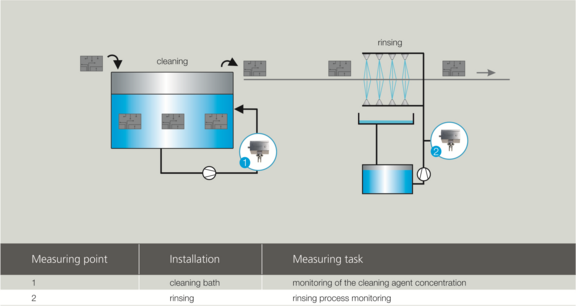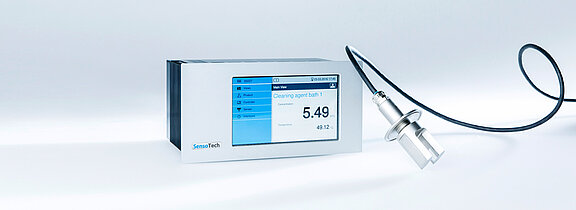In the manufacture of printed circuit boards, fiber-reinforced plastics are coated with copper layers. Subsequently, the conductor tracks are etched from the flat copper layers and the respective components are soldered to the circuit board.
The cleaning of printed circuit boards is an essential process step to remove impurities such as film-like or particulate residues from flux, resin or soldering paste. The impurities may cause electrical failures and corrosion of the circuit boards or assemblies. Often, single-chamber, multi-chamber and continuous flow cleaning systems are used for this purpose.
The purification process significantly influences the product lifetime and increases their reliability. As electrical parameters of the electronic components are being improved by purification, continious bath control is of enormous importance.
Application
The cleaning process of printed circuit boards consists of a cleaning step, followed by one or more aqueous rinsing steps. Often this is done in a spray cleaning system. Thereby, the precise dosed cleaning liquid is sprayed through nozzles on the assemblies. Aqueous cleaners, such as Atron and anhydrous cleaner are common. An aqueous cleaning process basically offers the advantages that the cleaners have no flash point and only a very low VOC-content.
Through many years of experience, the LiquiSonic® analyzer is a reliable partner in bath control and con-vinces with precise concentration determination of different types of cleaners. LiquiSonic®provides real-time data and permanent data recording, which is essential for high product quality and to avoid rejects.
Installation
The LiquiSonic® sensors are preferably installed in the circulation circuit after the pump or directly into the cleaning or rinsing bath. By using the LiquiSonic® Bath Monitor, up to four sensors can be connected, allowing the simultaneous monitoring of several measuring points.
The sensor electronics is mounted in closed stain-less steel housing with IP68 degree of protection, ideally suited for the process system cleaning with high-pressure washers. Bath monitoring in hazardous areas (non-aqueous cleaners) is made possible by sensors approved by ATEX, IECEx and FM.
Customer value
LiquiSonic® reduces extensive lab measurement: time saving:
- 2 x 0.5 h per day
LiquiSonic®optimize processes:
- Rapid detection of quality changes
- Internal data storage for quality management
- Optimizing the lifetime of the cleaning baths
- Avoid overdosing or early bath changes
- Optimal cleaning performance (process safety)
- Avoid over- and underdosing to save material costs

